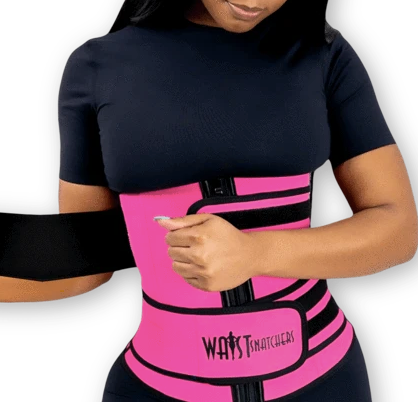
Women’s desire to have an hourglass figure isn’t a new concept. The wish to have an hourglass waist has been observed as early as the 15th century when women wore steel corsets underneath their clothes. Over time we’ve seen the trend of waist training evolve over the years from less healthy and dangerous, to a way to pair it with your exercise routine. Let’s dive into how waist training has changed over the course of the centuries.
Renaissance Era
During the Renaissance era of the 16th century corsets were called bodies and were part of the women’s dress. Often those corsets were made out of animal bones and horns. At the time those corsets would go all the way up to the chest and would flatten the chest, while simultaneously trimming the waist, giving the illusion of an upside down triangle figure. While corsets were worn to give the body an hourglass silhouette, they also served a second purpose. At the time women’s dresses had many layers of fabric. This often lead to the gowns being very heavy, the corsets helped to take some of the weight off of the wearer, making the dresses easier to wear. Later on in the 17th century corsets were made separate from the women’s dress, and were worn as an undergarment underneath the clothes. At the end of this century doctors started to warn women of the dangers of corset wearing, so the trend started to fade.
Victorian Era
With the onset of the Victorian era the desire for the perfect hourglass figure came back and women were clamoring to wear corsets again. At the time the corset went through another design change, now featuring steel boning. Due to ongoing doctor’s concerns about the dangers of corset wearing, they started to be designed below the waist allowing for less pressure to be placed on women’s stomachs. But the designers noticed that women still wanted a corset that cinched their waist, introducing the S shaped corset that gave the wearer the appearance of a hollow back and pushed their hips and stomachs backward. This corset caused a lot of damage to women’s muscles and skeletal systems and fortunately was soon out of trend.
1920’s to 1980’s
For a while it looked like corsets were never going to have a comeback as more and more women were interested in looser fitting clothes that were less restricting. In the 1950s Dior tried to bring back the hourglass figure look but this was short lived as the hippie movement of the 60s featured more free flowing fashion pieces. Coresets regained their popularity in the 1980s with Madonna often wearing them as a shirt and it slowly became a popular way of wearing them. During this time corsets weren’t necessarily worn to cinch the waist but were more seen as fashionable piece to wear. After the 80’s the corset went back to obscurity as the grunge era of the 1990’s introduced baggier clothes.
Modern Day Era

Fast forward to our times, the corset has made a major comeback but with a much healthier twist. They aren’t called corsets anymore and are mainly used for waist training purposes. Waist Trainers are primarily used in conjunction to a healthy diet and exercise, making them much healthier for the wearer.
